 W
WThe Araki Shuseikan Museum is an art museum located in Tenpaku-ku, Nagoya, central Japan.
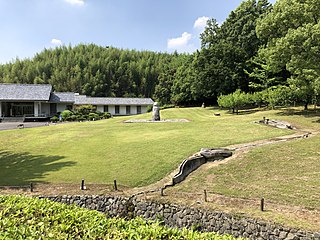 W
WThe Asuka Historical Museum is a historical museum in Okuyama, Asuka, Nara Prefecture, Japan. The museum was founded in 1975 and is a unit of the Nara National Research Institute for Cultural Properties.
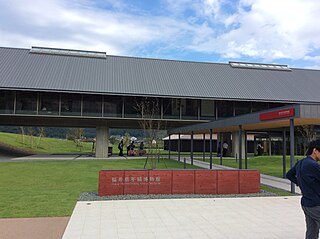 W
WFukui Prefectural Varve Museum is a geological and archeological museum located in Wakasa, Mikatakaminaka District, Fukui Prefecture, Japan. It features varve ranging from 70,000 years ago to the present, as found at the bottom of Lake Suigetsu. The special chairman is Kazuma Yamane.
 W
WHakodate Jōmon Culture Center opened in Hakodate, Hokkaidō, Japan in 2011. It has four exhibition rooms dedicated to the Jōmon period, displaying some 1,200 pieces of earthenware and stoneware excavated in Hakodate as well as the only National Treasure in Hokkaidō, the so-called "Hollow Dogū" , excavated from the Chobonaino Site . Hands-on activities, including magatama-making and "angin -knitting", are also available. The museum is located at Michi no Eki Jōmon Roman Minamikayabe , making this the only roadside station in Japan with a museum with a National Treasure.
 W
WHokkaido Archaeological Operations Center opened in Ebetsu, Hokkaidō, Japan in 1999. Its aim is to protect, preserve, and utilize buried cultural properties.
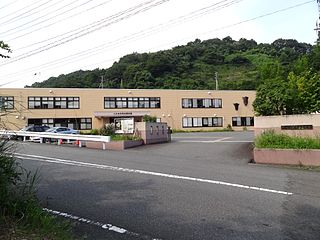 W
WIwaki City Archaeological Museum opened in Iwaki, Fukushima Prefecture, Japan in 1997. It exhibits artefacts from local excavations, including items from the painted Nakata Cave Tomb (中田横穴).
 W
WKamiyodo Hakuhō-no-Oka Exhibition Hall opened in Yonago, Tottori Prefecture, Japan in 2011. It replaced the Yonago Yodoe Folk History Museum (米子市淀江歴史民俗資料館), which closed in 2009. The three rooms of the exhibition hall display Yayoi decorated pottery, haniwa statues, fragments of early Buddhist wall painting from Kamiyodo Haiji, and a reconstruction of the temple kondō, with its paintings and sculptures.
 W
WThe Kobe City Museum opened in Kobe, Japan in 1982. It is one of Japan's many museums which are supported by a municipality.
 W
WKorekawa Archaeological Institution , more literally the Hachinohe City Buried Cultural Property Center, opened in Hachinohe, Aomori Prefecture, Japan in 2011. It exhibits Jōmon materials from the nearby Korekawa Site and Kazahari I Site (風張1遺跡), finds at the latter including the "Palms Together Dogū" (合掌土偶) that has been designated a National Treasure.
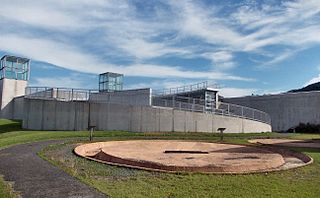 W
WKumamoto Prefectural Ancient Burial Mound Museum is a museum of decorated kofun in Yamaga, Kumamoto Prefecture, Japan. The collection includes full-size replicas of the inner chambers of twelve tumuli.
 W
WThe Kyoto City Archaeological Museum (京都市考古資料館) is located in Kyoto and showcases the city's archaeological findings. The building was constructed in 1914.
 W
WKyoto Prefectural Yamashiro Regional Museum (京都府立山城郷土資料館) is a regional museum located in Yamashiro District of Kizugawa City, Kyoto Prefecture. Its collections and exhibits cover archeological ruins as well as historical artifacts from south Yamashiro district of Kyoto Prefecture.
 W
WThe Matsurokan (末盧館) is a museum located in Karatsu, Saga Prefecture, Japan, dedicated to the Nabatake Site , a National Historic Site acclaimed as "Japan's first paddy".
 W
WThe National Museum of Ethnology is one of the major museums in Japan. It is Japan's largest research institute in the academic disciplines of humanities and social sciences, which was established in 1974 and opened to the public in 1977. It is built on the former grounds of Expo '70 in Suita, Osaka. The founding collection is known as the Attic Collection, and is an early 20th-century ethnological collection of mainly Japanese materials, including some early finds of Jōmon archaeological artifacts. Further collections were brought together for the opening in 1977 and collecting activities have continued since.
 W
WOsaka Prefectural Chikatsu Asuka Museum is a prefectural museum in Kanan, Ōsaka Prefecture, Japan dedicated to the area of Chikatsu Asuka during the Kofun and Asuka periods. The region is first documented in the Kojiki. The Chikatsu Asuka Fudoki-No-Oka Historical Park contains over two hundred burial mounds including four imperial tombs and those of Shōtoku Taishi and Ono no Imoko. The exhibition hall is divided into three sections: (1) Foreign influence during the Kofun and Asuka periods; (2) Kofun and the origins of the ancient realm; and (3) The application of science to cultural heritage. The museum was designed by Tadao Ando and opened in 1994.
 W
WThe Saitama Prefectural Museum of the Sakitama Ancient Burial Mounds is a museum in Gyōda, Saitama, Japan. The building is inside of Sakitama Kofun Park. It is one of Japan's many museums which are supported by a prefecture.
 W
WSapporo Buried Cultural Property Center opened in Sapporo, Hokkaidō, Japan in 1991. Its aim is to research, collect, provide expertise on the preservation of, and display the city's buried cultural properties. The collection includes Jōmon artefacts as well as those of the Satsumon culture excavated from the Sapporo City K-446 Site that have been designated a Prefectural Tangible Cultural Property.
 W
WThe Satohama Shell Midden (里浜貝塚) is an archaeological site consisting of a shell midden and the remains of an adjacent Jōmon period settlement located in what is now the city of Higashimatsushima, Miyagi Prefecture in the Tōhoku region of northern Japan. It has been protected by the central government as a National Historic Site in 1995.
 W
WThe Sendai City Tomizawa Site Museum is an archaeology museum in the city of Sendai in northern Japan that preserves a fossilized forest, where the remains of human habitation that occurred 20,000 years ago were discovered during surveying work in 1988. The museum opened in 1996.
 W
WThe Shijimizuka ruins is an archaeological site containing a late to final Jōmon period settlement trace and shell middens, located in what is now Naka-ku, Hamamatsu, Shizuoka Prefecture, Japan. The settlement was inhabited from approximately 2000 BC to 1000 BC. In 1959, the site was designated a National Historic Site and expanded and opened to the public as an archaeological park in 1984. A number of pit dwellings have been reconstructed. The site also preserves a late-19th-century farmhouse.
 W
WShimonoseki City Archaeological Museum opened in Shimonoseki, Yamaguchi Prefecture, Japan, in 1995. It is located next to the Ayaragigō Site, a Yayoi settlement that has been designated a national Historic Site.
 W
WThe Museum, Archaeological Institute of Kashihara, Nara Prefecture first opened under another name in Kashihara, Nara Prefecture, Japan, in 1940. The collection includes artefacts excavated from Fujinoki Kofun that have been designated a National Treasure. In addition to the permanent display, there are two special exhibitions each year, in spring and autumn.
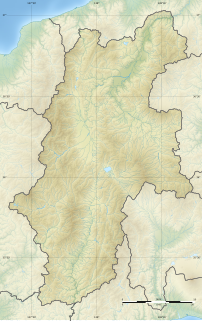 W
WThe Togariishi Museum of Jōmon Archaeology is a municipal museum located in the city of Chino, Nagano Prefecture, Japan, specializing in artifacts of the Jōmon period.
 W
WThe Tōhoku History Museum is a museum in Tagajō, Miyagi Prefecture, Japan. It houses finds from excavations at the site of Tagajō as well as from other archaeological sites in the Tōhoku region of northern Japan.
 W
WTokushima Archaeological Museum opened in Tokushima, Japan, in 1998. The collection includes artefacts from the Jōmon to the Nara and Heian periods.
 W
WTokushima Prefectural Buried Cultural Properties Research Centre opened in Itano, Tokushima Prefecture, Japan, in 1995. The collection includes a dōtaku excavated in Yano, Tokushima City which has been designated an Important Cultural Property. Publications include an Annual Bulletin and Research Reports.
 W
WThe Uenohara site is a Jōmon archaeological site in Kirishima, Kagoshima Prefecture, Japan. Pit dwellings were discovered during construction work in 1997. The numerous associated earthenware and lithic finds are an Important Cultural Property and the area has been designated a Historic Site. In 2002/3 an area of 36 ha was turned into a park and exhibition centre, known as Uenohara Jōmon no Mori (上野原縄文の森) lit. 'Uenohara Jōmon Forest'.
 W
WWakasa Mikata Jomon Museum (若狭三方縄文博物館) is an archeological museum located in the town of Wakasa, Fukui Prefecture, Japan. It is dedicated to the exhibition of Torihama shell mound as well as varve, oldest of which dating back to 70,000 years ago, discovered in the bottom of Lake Suigetsu, one of the Five Lakes of Mikata. The founding chairman is Takeshi Umehara.
 W
WWakayama Prefecture Kii-fudoki-no-oka Museum of Archaeology and Folklore is an archaeology museum located in the outskirts of the city of Wakayama, Wakayama Prefecture, Japan. It was opened in August 1971 with the main purpose of preserving, researching, and displaying artifacts from the Iwase-Senzuka Kofun Cluster, a Special National Historic Site.